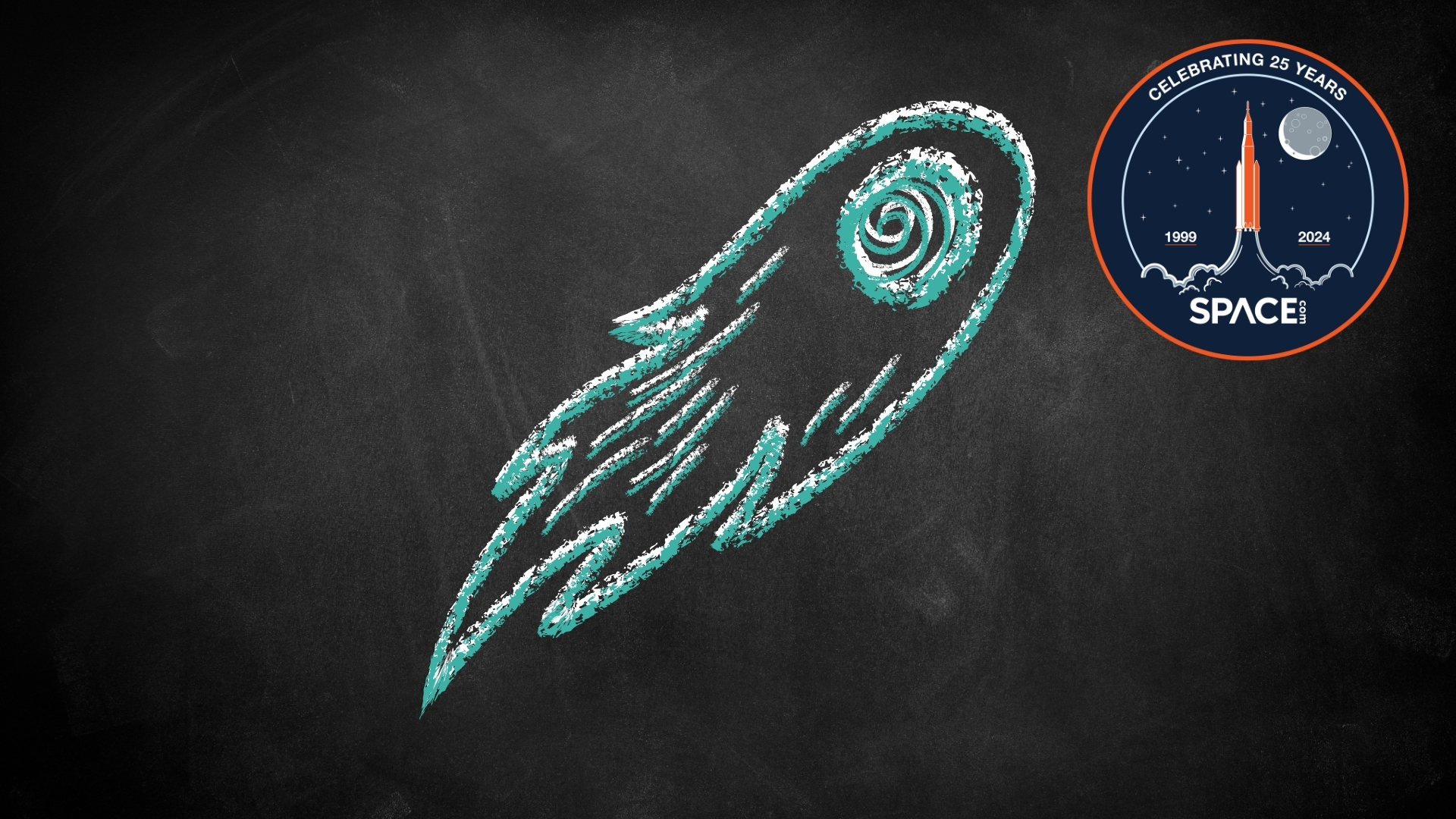How to make a comet
These 'dirty snowballs' are some of the most fascinating objects in our solar system.

There are many different objects in our solar system — planets, the sun, asteroids… and comets! In this project, we are going to make a comet in two different ways and learn about its parts in the meantime.
A comet is sort of like a dirty snowball. There are over three thousand comets in our solar system. Some have orbits that take them very close to the sun and then whip them out to the outer solar system, even farther out than Neptune.
Project 1: How to make a comet on a stick
This art project will teach us about the parts of a comet while having some fun!
You will need:
- A styrofoam ball or a wad of paper crumpled up in a ball
- A stick or pencil
- Various art supplies to decorate your comet: cotton balls, pom poms, yarn, chenille sticks, aluminum foil, bubble wrap, stuffing fiber, etc.
The Styrofoam ball (or wad of paper) is your comet's nucleus. This is the central part of the comet — a frozen core of water and dust, as well as other molecules like carbon dioxide, carbon monoxide, ammonia, and methane. The comet nucleus often is not a perfect sphere, so you can glue pom poms, cotton balls, or other supplies to make it into a potato-like shape.
Related: Learn about Space with these awesome NASA education videos
As a comet heads towards the sun, jets begin to form, shooting off the nucleus. These jets are sublimated gas. Sublimation is when a solid — in this case ice or other material — is converted directly into a gas without first becoming a liquid. You can represent these jets as yarn streaming off in many directions.
Get the Space.com Newsletter
Breaking space news, the latest updates on rocket launches, skywatching events and more!
Surrounding this is the coma — a cloud of sublimated gas that forms around the nucleus. This can be 1,000 times the size of the nucleus in real life! In this art project, you can simulate the coma by surrounding your comet with stuffing material or bubble wrap.
Finally, a comet has two tails, a dust tail and an ion tail. As the comet travels around the sun, the ion tail points away from the sun. Many times it is blue. You can simulate your two tails with chenille stems.
Now you have your own comet!
Project 2: Create a comet with dry ice
Now we are going to make a model of a comet. We will need:
- Protective gloves and safety glasses.
- 1 liter of water
- 2 cups of dirt
- 1 Tbsp of starch
- 1 Tbsp syrup
- 1 Tbsp vinegar
- 1 Tbsp rubbing alcohol
- 5 pounds of dry ice crushed into small balls with a rubber mallet
- A bowl
- A plastic bag
Comets are mostly ice! To create our ice, we will pour water into the bowl lined with a plastic bag. Comets have other components too. Our dirt represents minerals and dust. Syrup represents organics — those molecules that contain carbon. Vinegar represents amino acids. Rubbing alcohol will represent methanol. The starch will help to hold the mixture together. Now, we will make our comet cold. Pour about five pounds (2.2 kilograms) of crushed dry ice on top of the mixture. A cloud will form around your "comet". This is similar to the cloud around the comet, called a coma.
Now you can gather the sides of your plastic bag together (remember your gloves!) and press it together. When you open up your bag, the result will be a "dirty snowball". This is much like what the nucleus (center) of a comet looks like.
Look carefully at your comet. Is it a perfect ball, or is it shaped oddly? Does it have holes or pockmarks? What color is it? Comets come in all different shapes and sizes, especially weird ones. Some look like potatoes, and some are drawn out to be long and skinny. Most are dark, but they can come in a range of albedos (brightness). What do you think would happen if your comet warmed up as it approached the sun? As comets warm, material coming off the comet forms tails made of gas and dust. Particles that fall off the comet are also responsible for meteor showers!
Join our Space Forums to keep talking space on the latest missions, night sky and more! And if you have a news tip, correction or comment, let us know at: community@space.com.
Elizabeth is a freelance science writer. She has a Ph.D. in astrophysics from the University of Texas at Austin and has worked with telescopes all around the world and in space. Now she writes on astronomy, physics, geology, mathematics, and science and technology in society.










